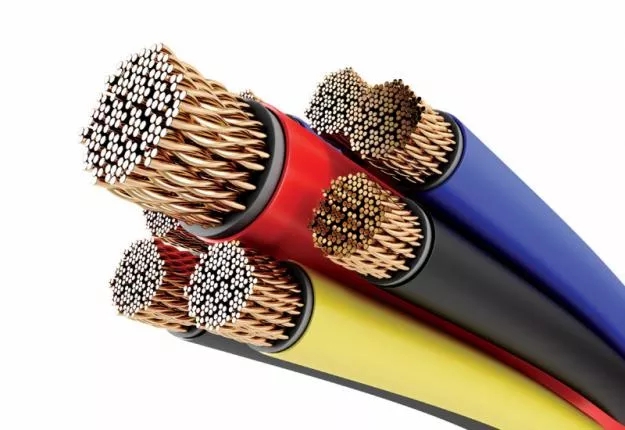
Color meaning
1. Black
Internal wiring of devices and equipment.
2. Brown
The positive pole of the DC circuit.
3. Red
Three-phase circuit and C-phase;
The collector of a semiconductor transistor;
The cathode of a semiconductor diode, rectifier diode, or thyristor.
4. Yellow
Phase A of the three-phase circuit;
The base of a semiconductor transistor;
The control electrode of thyristor and triac.
5. Green
Phase B of a three-phase circuit.
6. Blue
The negative pole of the DC circuit;
The emitter of a semiconductor transistor;
The anode of a semiconductor diode, rectifier diode, or thyristor.
7. Light blue
The neutral or neutral line of a three-phase circuit;
The grounded neutral of the DC circuit.
8. White
The main electrode of the triac;
Semiconductor circuits without designated colors.
9. Yellow and green two colors (each color is about 15~100mm in width alternately attached)
Grounding wire for safety.
10. Red and black in parallel
AC circuit connected with two-core wire or twisted-pair wire.
Choose different color wires according to the circuit
1. Three-phase AC circuit
Phase A: Yellow
Phase B: Green
Phase C: Red
Zero or neutral line: blue
Protective grounding wire: yellow and green color.
2. In a single-phase circuit
FireWire: Red
Zero line: blue
3. AC circuit connected with two-core wire or twisted-pair wire
Red and black parallel
4. DC circuit
Positive electrode: brown
Negative electrode: blue
Grounding wire: blue.
5. The internal wiring of the entire device and equipment
Black is generally recommended.
Comparison of the advantages and disadvantages of soft and hard wires
From the appearance of wires
Flexible wire, also called sheath wire, is generally a wire made of multiple copper wires with a diameter of less than 1mm. The hard wire is a relatively thick single-strand metal wire, generally directly above 1mm.
From the perspective of the nature of the wire
The thread of the cord is relatively thin and soft, which is convenient for turning and passing through the tube. However, it is easy to age over time and affect the service life of the entire circuit.
Hard wires are inherently relatively small in cross-section, resistant to the impact of short-circuit current, and hard wires are not easy to oxidize, and their lifespan is relatively longer than that of soft wires. However, the hard wire itself is hard to deal with when turning through the pipe.
Is the flexible cord better for home improvement or the hard cord longer life?
Each copper wire of the flexible wire is relatively thin, which is easy to be damaged and broken during installation, thereby affecting the electrical conductivity of the wire. On the contrary, the hard wire will not be affected by the construction process, and it is much better in reliability and durability.
















 RCCN WeChat QrCode
RCCN WeChat QrCode Mobile WebSite
Mobile WebSite